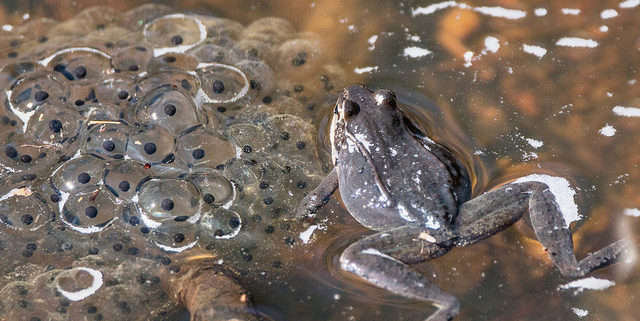Our stories matter, and so does the way we tell them
Photo: Barbara J. Saffir (c)
Marilyn Kupetz
The most wonderful storytellers of the natural world mesmerize us with their skill and learning, their warmth, their ability to connect with us even as they are asking for our help and time. Alonso Abugattas is one of the masters in northern Virginia, as are Charles Smith, Tammy Schwab, and Doreen Peters.
For naturalists who teach, who speak publicly, who are required to show up with enduring material, charisma and tactile props may not suffice, alas. Yet the requirement to stand in front of a screen at the front of a room doesn’t mean that presentation-based storytelling has to be tedious. Effective storytelling and well-designed materials can easily complement one another.
Indeed, slides can be as beautiful as the world we want to preserve, and potent enough to stand a chance of depositing a message that actually takes root. Are you ready for some free, legal resources to confect those lovely materials?
Garr Reynolds, the generous presence behind Presentation Zen, seeds his online resources with almost every bit of counsel you’d ever need to speak at a VMN Conference or teach an FMN class. His ten tips could make the difference between having a room full of people on the fence or energized evangelists who pick up your cause and contribute to its success.
Even when you know what you want to say, however, you have to decide what to show. The kind of photos that Reynolds uses for his own work are everywhere online, but usually they aren’t simply ours for the taking. Their photographers own the distribution rights. Copyright law does allow for limited classroom use, but what if your presentation is going to be videotaped and shared widely? You need to be careful about what you borrow and how you attribute credit.
If you can’t take your own photos and get permission from the people in them, consider taking advantage of sites that supply free, legal photographs to the public. You should definitely build credit into your metadata and references, but otherwise you will break no laws, you will give aspiring photographers the street cred they need to keep working on our behalf, and your presentations will be the better for it.
Here are a few places to start:
- Unsplash
- Pixabay
- Wikimedia Commons
- Compfight
- Noun Project (icons, not photos)
If there’s interest, we can talk more, online and off. In the interim, here are more imagery resources if you are ready to grow your skills as a storyteller in the service of the causes you care about.
Thank you to Barbara J. Saffir and Ana Ka’ahanui for sharing their photos with Fairfax Master Naturalists.





This is a great introduction to telling our stories effectively. The “Presentation Zen” talk you gave a link to has really good advice, much of which echoes what I learned in the Certified Interpretive Guide training class I attended, taught by Tammy Schwab and Suzanne Holland. Those guidelines to connecting with your audience and finding the universals at the heart of your topic are probably even more important to a memorable presentation than great photos and/or artifacts. The suggestions for sources for legal photos are also very helpful.!